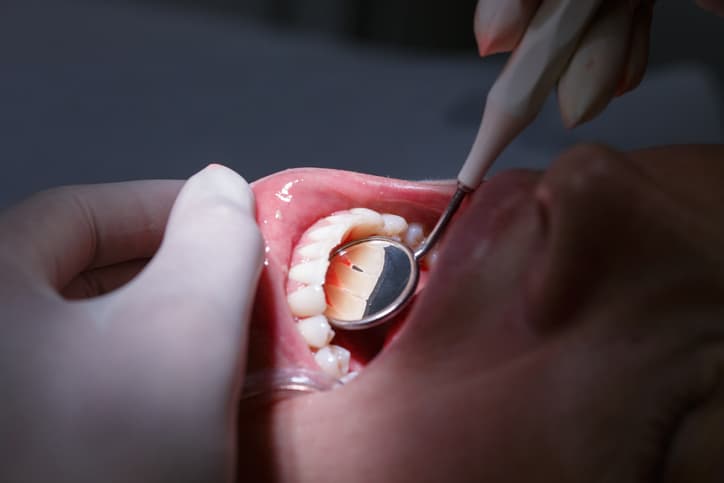
How to Recognize Healthy Gums
Healthy gum tissue has specific characteristics. The colour of normal gum tissue can vary, but it is typically coral pink or a darker hue within this pigmentation (variations in pigment are relative to your cultural background). Healthy gum tissue is not inflamed and therefore feels snug and natural around your teeth. The shape of gum tissue typically looks knife-edged or pyramidal and follows a curved line around the tooth. Normal gum tissue generally has a firm texture and may or may not have a stippled appearance on the outer gum – like the outside of an orange. Lastly, there is no spontaneous bleeding with healthy gums.
What Causes Unhealthy Gums
Bacterial plaque is the primary cause of periodontal (gum) disease or gingivitis, according to the American Academy of Pediatric Dentistry (AAPD). The gum tissue generally responds to the bacterial plaque with inflammation, which usually develops when there is an invasive amount built up against the gumline. When bacterial plaque is removed, the inflammation can be reversed. Other factors that can lead to advanced gum disease, as stated by the American Academy of Periodontology (AAP), include age, stress, genetics, smoking or tobacco use, medications, or simply grinding and clenching your teeth – specifically while you sleep. There may also be a relationship between periodontal disease and systemic diseases such as diabetes, heart disease and rheumatoid arthritis.
Common Warning Signs
There are several signs and symptoms that you may notice or feel which can indicate early or advanced stages of gum disease:
- Red, inflamed or tender gums
- Gums that recede from the teeth
- Pus when pressing against the gums
- Permanent teeth that are loose or separating
- Any change to your natural bite
- Noticeable changes in the fit of your partial dentures
- Bad breath
Irritated gums also commonly bleed with brushing and flossing, but don’t ditch these habits altogether. Changing the way you clean your mouth on a daily basis can actually improve its effectiveness against gum disease.
Healthy Brushing
There are several healthy habits that you can use to improve or maintain healthy gums. Brushing at least twice a day with a soft-bristled toothbrush will help to control bacterial plaque that can accumulate in your mouth. Your toothbrushes position should be at a 45-degree angle toward the gumline when you brush the front and back surfaces of your teeth. Your stroke movement against the teeth should be a short and gentle in a back-and-forth motion.
Correct Flossing
Flossing at least once a day to remove bacterial plaque and food debris will help to prevent gum disease while curbing tooth decay and bad breath in the process. The floss should be inserted between your teeth using gentle force. It is important to curve the floss in a “C” shape around each tooth, moving it against the tooth and below the gum line in an up-and-down motion.
Visit Your Dentist Regularly
It is important to make regular dental checkups at least twice a year, but don’t wait until you feel pain. Generally, by the time you feel irritation, your gums may already have an infection or be in an advanced stage of gum disease. Talk to your dentist about your oral health; they can examine your gums to identify signs of unhealthy gums. Your dentist’s office can also recommend oral health products that are most effective in meeting your specific needs. And of course, your dental hygienist should give you professional cleaning to remove bacterial plaque and calculus (tartar), which traps bacterial plaque around and below your gumline.
